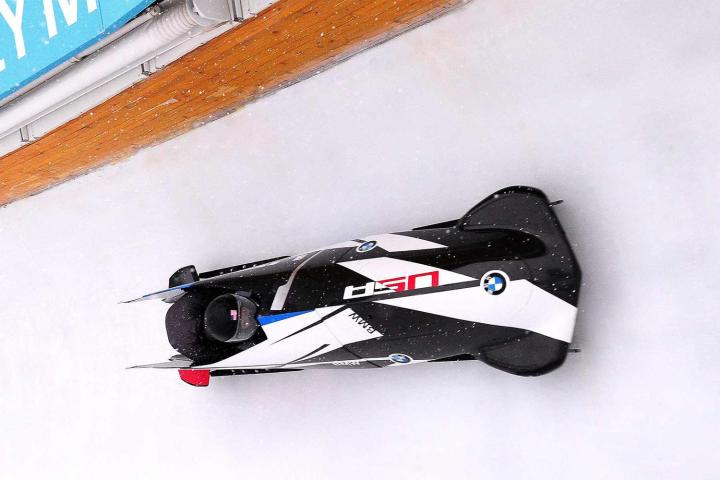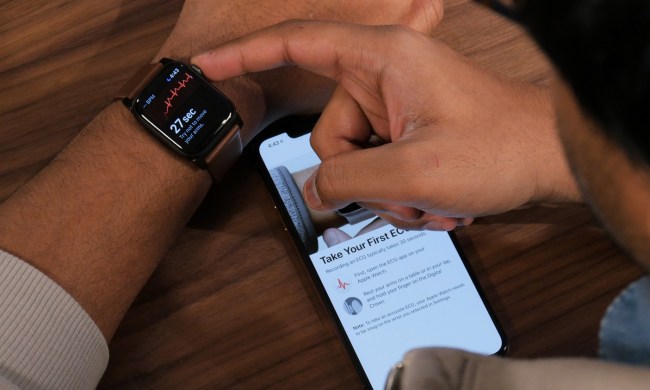
As with so much else in life, in two-man bobsled, timing is everything.
American teams have seen success in international competition, just not in the one most people in this country pay any attention to: the Olympics. The United States hasn’t won gold since the 1936 Winter Games at Garmesh-Partenkirchen in Germany.
Beating the world’s best is difficult even under ideal circumstances, and for years American sledders have operated under anything but as the only prominent national team not receiving government funding. Moreover, many of the big manufacturers in Europe themselves receive government funding to help produce better sleds, in turn producing better results. The sled is like a third member of the team, and any weakness relative to the competition shows in the standings.
This year, things are different. Hoping to build, then drive, a better mousetrap, Team USA turned to the North American division of BMW, a company well-versed in speed … just not bobsleds. BMW USA’s parent company in Europe began consulting on the German sled in 2010, but BMW wasn’t responsible for the design. Michael Scully, BMW Group DesignworksUSA Creative Director, was the lead designer on the project. Once a race-car driver, he was also no stranger to speed … just not bobsleds.

So Scully started from scratch, at the most basic place: shape.
“We didn’t want only to do a typical bobsled,” he says, “but we also wanted to understand why they were shaped the way they were for many, many years.”
Scully’s team created five distinct “families” of shapes – each color coded to match one of the Olympic rings – to understand what the basic architecture of the sled ought to be. This became the basis for Computational Fluid Dynamics (CFD) testing. Essentially like sticking the designs in a computerized wind tunnel, the process helped narrow down five families to one. The big winner had the downforce sought after in race vehicles, helping lend a feeling of stability and control – no “floatiness” for the driver to fight – and more importantly showed the best reduction in drag.
Violent, noisy, and chaotic, it’s like steering a marble through a trip in the clothes dryer.
Still, the sleds themselves, compared to something like a race car, are comparatively low-fi machines.
“There’s very few moving parts,” says Steven Holcomb, a three-time Olympian in Sochi and America’s top bobsled driver. “There’s no engine. There’s no power steering. There’s no anti-lock brakes. There’s no computer inside. There’s a lot that goes into these sleds, but at the same time, they’re so simple.”
Whether by that relative simplicity or the giant stack of rules, when so much is taken out of a designer’s hands, the few areas left to make decisions become that much more significant. “Those are where the subtlety has to happen. It’s a sport of tiny subtleties hopefully adding up into something on a stopwatch,” Scully says.
The design BMW arrived at was smaller, with a lower center of gravity. Built with an autoclave-cured carbon-fiber body, it was also lighter, to the point weight had to be added to bring the thing up to code. Where, Scully won’t say (the first rule of Bobsled Design Secrets is do not talk about Bobsled Design Secrets). But shaving weight from the shell allowed Scully and his team to decide where those pounds – in the form of lead plates – should go back into the sled. This, he says, is a big advancement, affording better control of its behavior during a run.
Still, lab-based testing could only accomplish so much.
“Computational fluid dynamics, they give you one set of answers or values, but it’s not necessarily the truth,” Scully says. “The only way you get the truth of the shape is when you get it on the track. That’s probably the most challenging aspect of this project, is that bobsleds experience such a huge variety of positions as they go down a track that their orientation to airflow and the track itself is constantly changing. That level of variability is something we had to design for as well. CFD values are one thing, but really you have to get it on to the track and understand what the pace is.”
That pace, just as a reminder, is very, very fast: up near 90 miles an hour. As Scully himself learned when he took a ride in the four-man version of the bobsled. “That was their handshake,” he says. “Get in.” Violent, noisy, and chaotic, it’s like steering a marble through a trip in the clothes dryer.
“There’s no engine. There’s no power steering. There’s no anti-lock brakes. There’s no computer inside.”
“It’s a unique skill that not a lot of other people have and you can’t take 500 laps and get used to it. You don’t have time to practice,” Holcomb says. “If we change something, we have one or maybe two runs. We’re going full speed the very first time we try to make a change. It’s very fast, very quick.”
As a result, Scully became extremely dependent on Holcomb and his teammates for feedback, creating a unique marriage of designer and driver.
Certain fears were alleviated quickly. Given the smaller dimensions of the BMW sled, Scully worried its substantial passengers (Holcomb is 5-foot-8-inches, 231 lbs, his brakeman Steve Langton is 6-foot-3-inches, 227, and their teammates are similarly sized) wouldn’t fit inside the thing while it was stationary, let alone be able to leap in after pushing it at the start of a run. They did, and could. (Exhale.) On the other hand, early editions of the steering mechanisms left something to be desired, Holcomb says. There wasn’t nearly enough feel.

Some design concepts fell by the wayside, waylaid by the realities of the track. For example, one design including a pair of “fins” extending off the back of the sled tested very well in the lab. But once the sled was on the track, they started vibrating and chattering. Plus, it turned out the techs couldn’t do maintenance between runs with them attached, because they made it tough to roll the sled over by hand.
“It was one of those learning experiences along the way,” Scully said. “In simulation, this is better. In reality, as soon as it starts flapping like that? No, it’s not better. And if the guys can’t use it the way they normally would and flip it over all the time, no, it’s not better.”
Throughout the process, Scully was in awe of Holcomb’s ability to maximize the value of every run, and what could be learned from it. “I call him a metronome. He can do exactly the same start time, every run. He can hit the same number — it didn’t have to be the fastest number, as long as it’s consistent.” From there, Holcomb’s expertise as a driver allowed him to detect incredible subtleties in the sled’s ride and steering despite the incredible violence of a bobsled run. “I have 10, 11 years of driving experience. I’m able to manipulate the sled and maneuver it in ways that a lot of other drivers can’t,” Holcomb says. And thanks to Scully’s racing background, relating what he felt on the track wasn’t complicated.
“The subtlety of input that the pilots are able to perceive would blow your mind.”
“The subtlety of input that the pilots are able to perceive would blow your mind,” Scully says. “There were times they’d ask for a small adjustment, and it would be like a little rubber band almost. Just a small tensioning device on a steering, and it’s like “Really, you can feel that?” and they would go down, come back, and have a direct reaction to what you had just implemented.”
The world of bobsledding is one in which secrets are tightly protected and new technology is greeted with great interest, as was the case when the US busted out its new toy at a World Cup race in Igls, Austria last January. “It blew everybody’s mind. Everybody’s kind of panicked,” Holcomb says. “(Then) I take it down the first run, and of course, I made a mistake going into the first curve and we ended up finishing 14th. There was kind of a sigh of relief around the world because we were so slow.”
They might be hyperventilating, now. Since that inauspicious debut, Holcomb and his teammates have made great strides in the BMW sled. Holcomb has won five two-man bobsled competitions this season, including a triumphant return to Igls in January. He’s considered among the favorites to take gold in Sochi.

If Holcomb is able to end America’s drought in two-man competition, it will represent not just a triumph of engineering and practical know-how, but of the power of collaboration: Two very different minds working together to shave hundredths and thousandths of seconds from a run, the difference between winning and losing.
“There’s three elements,” Holcomb says of winning a bobsled race. “You have to have a great push, a great driver, and you have to have a great sled. If you’re missing one of those at this level, you’re not gonna win. You’re not gonna be successful.”
The first two are up to the athletes. But in Sochi, there is every reason to believe the third is well taken care of.





